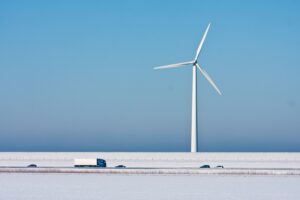 As we continue on our quest for sustainable energy, wind turbines play a pivotal role, converting the raw power of the wind into usable electricity. Yet, these marvels of engineering are not exempt from challenges, particularly in colder climates where ice accumulation can adversely affect performance and safety. This is where icephobic solutions step in, offering a revolutionary approach to maintaining the integrity and efficiency of wind turbines in icy conditions.
As we continue on our quest for sustainable energy, wind turbines play a pivotal role, converting the raw power of the wind into usable electricity. Yet, these marvels of engineering are not exempt from challenges, particularly in colder climates where ice accumulation can adversely affect performance and safety. This is where icephobic solutions step in, offering a revolutionary approach to maintaining the integrity and efficiency of wind turbines in icy conditions.
Icephobic solutions, an innovative category of anti-ice coatings, are hydrophobic substances that repel water, thereby preventing the formation and adherence of ice on surfaces. When applied to wind turbines, they form a protective layer that safeguards the blades from the detrimental effects of ice build-up, which can compromise aerodynamics, reduce power generation efficiency, and elevate maintenance costs.
The importance of these solutions becomes evident when we look at the operational challenges faced by wind turbines in cold climates. Ice build-up not only alters the aerodynamic profile of turbine blades, but it can also lead to dangerous ice shedding and hurling, posing a significant safety risk. By preventing this accumulation, icephobic coatings ensure the consistent, safe operation of wind turbines, even amid harsh winter conditions.
Moreover, the use of icephobic solutions reduces the need for costly and time-consuming de-icing operations. This ensures that turbines can remain operational for longer periods, enhancing the overall reliability of wind power as a sustainable energy source.
Looking ahead, the advent of superhydrophobic coatings — the next evolution of icephobic solutions — promises to further redefine how we combat icing issues in wind energy applications. With their enhanced ice-repelling properties, these coatings are set to offer even greater resistance to ice, boosting the safety, efficiency, and sustainability of wind power generation.
In conclusion, icephobic solutions applied by are more than just a technological innovation; they represent a paradigm shift in our approach to sustainable energy. As the green energy sector continues to evolve, the role of such solutions will only become more critical, reinforcing our commitment to

